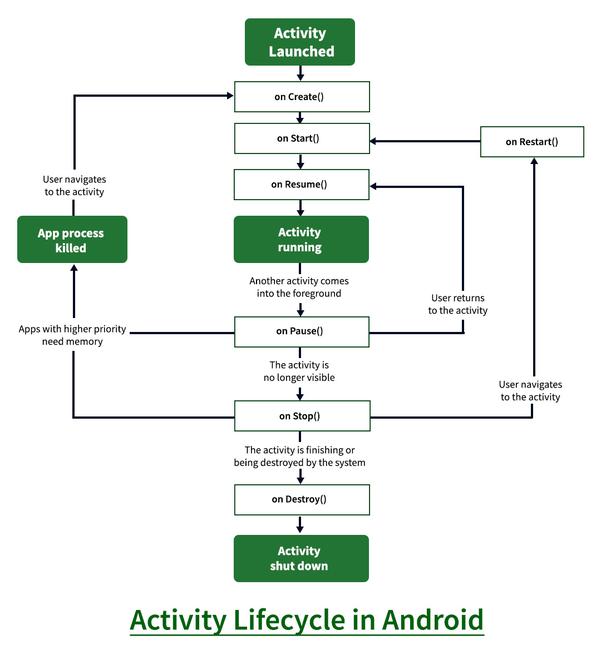Activity Lifecycle in Android with Demo App
In Android, an activity is referred to as one screen in an application. It is very similar to a single window of any desktop application. An Android app consists of one or more screens or activities.
Each activity goes through various stages or a lifecycle and is managed by activity stacks. So when a new activity starts, the previous one always remains below it. There are four stages of an activity.
- If an activity is in the foreground of the screen i.e at the top of the stack, then it is said to be active or running. This is usually the activity that the user is currently interacting with.
- If an activity has lost focus and a non-full-sized or transparent activity has focused on top of your activity. In such a case either another activity has a higher position in multi-window mode or the activity itself is not focusable in the current window mode. Such activity is completely alive.
- If an activity is completely hidden by another activity, it is stopped or hidden. It still retains all the information, and as its window is hidden thus it will often be killed by the system when memory is needed elsewhere.
- The system can destroy the activity from memory by either asking it to finish or simply killing its process. When it is displayed again to the user, it must be completely restarted and restored to its previous state.
For each stage, android provides us with a set of 7 methods that have their own significance for each stage in the life cycle. The image shows a path of migration whenever an app switches from one state to another.

Detailed introduction on each of the method is stated as follows:
1. onCreate()
It is called when the activity is first created. This is where all the static work is done like creating views, binding data to lists, etc. This method also provides a Bundle containing its previous frozen state, if there was one.
Example:


